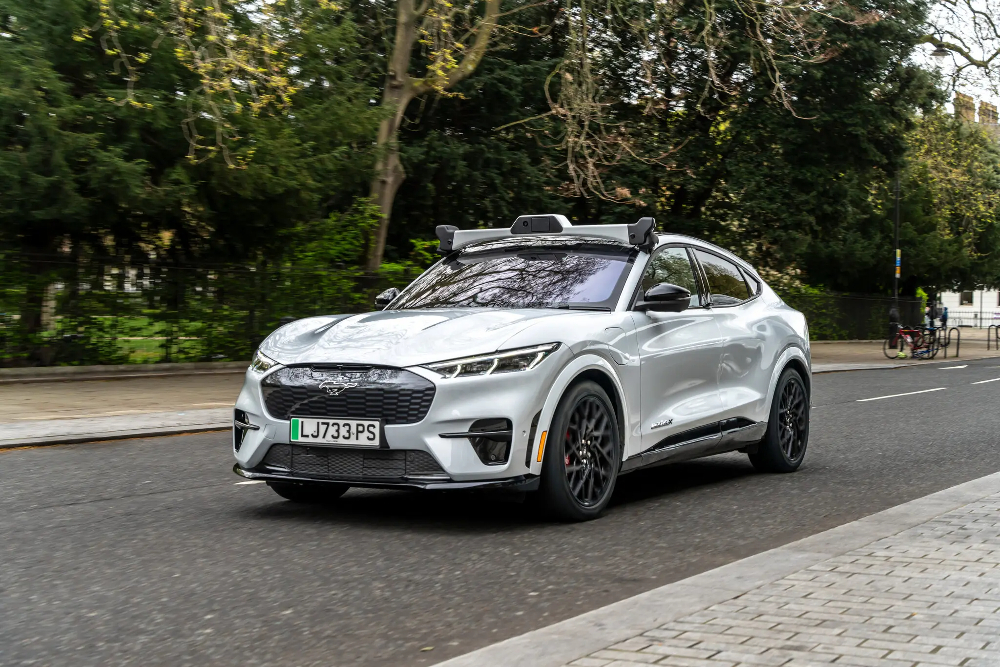Sign up for daily news updates from CleanTechnica on email. Or follow us on Google News!
Hyundai Motor Group announced this week it will invest nearly $1 billion in Motional, a robotaxi business that is a joint venture between Hyundai and Aptiv. The new investment will significantly reduce Aptiv’s stake in the enterprise.
According to TechCrunch, Motional started as Boston-based autonomous vehicle startup nuTonomy in 2013 before being acquired by Delphi for $450 million. Delphi would later split its business, with its new Aptiv unit absorbing nuTonomy. The entity became Motional under a $4 billion Hyundai-Aptiv joint venture in 2019. While it’s clear from Aptiv’s earnings report that the company is trying to manage risks and optimize finances amid a less than positive outlook, the company’s retreat, and Hyundai’s step forward, raises questions about Motional’s future. Clearly Hyundai thinks it has a future or it wouldn’t be investing more money in the business.
The Motional robotaxi will be based on the Hyundai Ioniq 5 and manufactured at the new Hyundai Motor Group Innovation Center in Singapore, a factory that is intended to produce up to 30,000 so-called “purpose built vehicles” for the global market each year. One of the interesting features of the HMGIC-S is that production will be monitored and controlled by several Boston Dynamics robot dogs. Hyundai bought Boston Dynamics in June three years ago.
The facility includes a full digital twin to the physical factory. Customers will be able to order a vehicle from home or at the facility, choose their color and even select highly personalized elements for their car, then witness it brought to life, the company says. The factory already manufactures the Ioniq 5 and the fully autonomous Ioniq 5 robotaxi, and will begin manufacturing the Ioniq 6 next year.
Motional has been testing its autonomous vehicles with a safety driver behind the wheel in Boston, Pittsburgh, Las Vegas, Los Angeles, and Singapore. The company’s go-to-market strategy involves partnering with existing ride-hail platforms like Uber, Lyft, and Via to give customers rides. Motional has stated its goal of launching a robotaxi service using driverless Hyundai Ioniq 5 vehicles in 2024.
Motional and Hyundai announced plans in November 2023 to co-develop production-ready versions of the battery-electric Ioniq 5 robotaxi at the Hyundai Motor Group Innovation Center Singapore. During CES 2024, Motional also announced plans to work with Kia on a next generation vehicle that will enter commercial operations later this decade, with initial development stages beginning this year.
Robotaxi Mania
What exactly is a robotaxi? It is a transportation device that can drive people from where they are to where they want to go without the need to own a vehicle, maintain it, insure it, supply it with fuel, park it, or repair it. The best analogy is that a robotaxi is a horizontal elevator that you pay a fee to use. It is quite literally transportation as a service. The elevator example is an imperfect concept, however. An elevator travels in a fixed space (hopefully!) and there are no other elevators trying to use the same space at the same time. There are also no ice storms, rain, pedestrians, dogs, bicyclists, ambulances, fire trucks, and street sweepers in there with it all going different directions at different speeds at the same time.
Robotaxis, when and if they ever become operational at scale, will replace the private automobile for many people. You don’t need your own airplane to get to Disney World. You pay someone else to fly you there. That’s pretty much the robotaxi model. In theory, we as consumers will save a lot of money by letting someone else provide transportation for us. Also in theory, the company that provides that service will make a lot of money from picking people up and dropping them off on demand 24 hours a day and getting paid for each journey.
What changes might robotaxis bring to the transportation sector? How about reducing the number of cars on the road by 90%? A private passenger car is only in use about 5 to 10% of a normal day. A robotaxis can do the work of ten (or more) private vehicles. There would be no need for parking lots, which could be converted into green spaces. The environment would be quieter without all that traffic. Traffic accidents would be eliminated, everyone would be happier and could focus on promoting world peace instead of getting the jump on other cars when the light turns green.
The whole robotaxi thing only applies to urban environments, however. It doesn’t really solve the need to commute to work or the congestion that goes with it. It also doesn’t solve the need people feel to drive anywhere at any time. Our cars are always parked nearby; just jump in and go. It’s the ultimate expression of personal freedom. A horizontal elevator will never replace the allure of the open road with wind in our hair and sun on our faces. It is what its name implies — a taxi — with all the romance and charm associated with that mode of transportation.
And yet, despite all those questions, Hyundai is willing to shovel another billion dollars into Motional after having already funded it with an initial investment of $2 billion just a few years ago. None of these robotaxi companies have hit the financial jackpot yet even though they have invested decades of effort and cubic yards of money into the effort. Does Hyundai know something we don’t? Probably.
The Robo Tesla
Tesla has recently doubled down on its rohotaxi plans. If all goes well, it expects to make a major announcement on August 8 — a date that has symbolic significance in Chinese culture, apparently. But one has to wonder about how Tesla intends to create self-driving cars that don’t look like self-driving cars. Waymo, Hyundai, Cruise, and all the other companies jockeying for position in the robotaxi space rely on rather bulky arrays of external sensors to gather the data they need to drive themselves. Inside those arrays are multiple lidar, radar, GPS, and ultrasonic sensors that feed streams of digital information to the computers that control those cars.

UK startup Wayve just scored a $1 billion investment this week. Its sensor suite is far less bulky than what Hyundai uses. It looks more like a traditional taxi display, rather than a large box full of electronics on the roof. Nevertheless, Elon Musk disdains such excrescences on his cars. He delayed the Model X for two years because of his dislike for the sliding doors used by many minivans. The channel along the rear flank used by everyone else offended his sense of style and so the falcon wing door was invented to solve that problem.
Today, Tesla relies exclusively on an array of cameras to guide its cars when in FSD mode. In fact, it has eliminated radar from its latest automobiles. Are we supposed to believe Tesla engineers can duplicate what Waymo, Cruise, and the others have accomplished using only a suite of cameras? That seems preposterous, but Musk has surprised us before. He recently promised — in his typically understated style — to go “balls to the wall” on autonomous driving. August 8 is just around the corner. Will Tesla have real robotaxis and/or autonomous cars by then or just an other dog and pony show like the Tesla Roof reveal or the Roadster 2.0 show? “We’ll see,” said the Zen master.
Have a tip for CleanTechnica? Want to advertise? Want to suggest a guest for our CleanTech Talk podcast? Contact us here.
Latest CleanTechnica.TV Video
CleanTechnica uses affiliate links. See our policy here.





